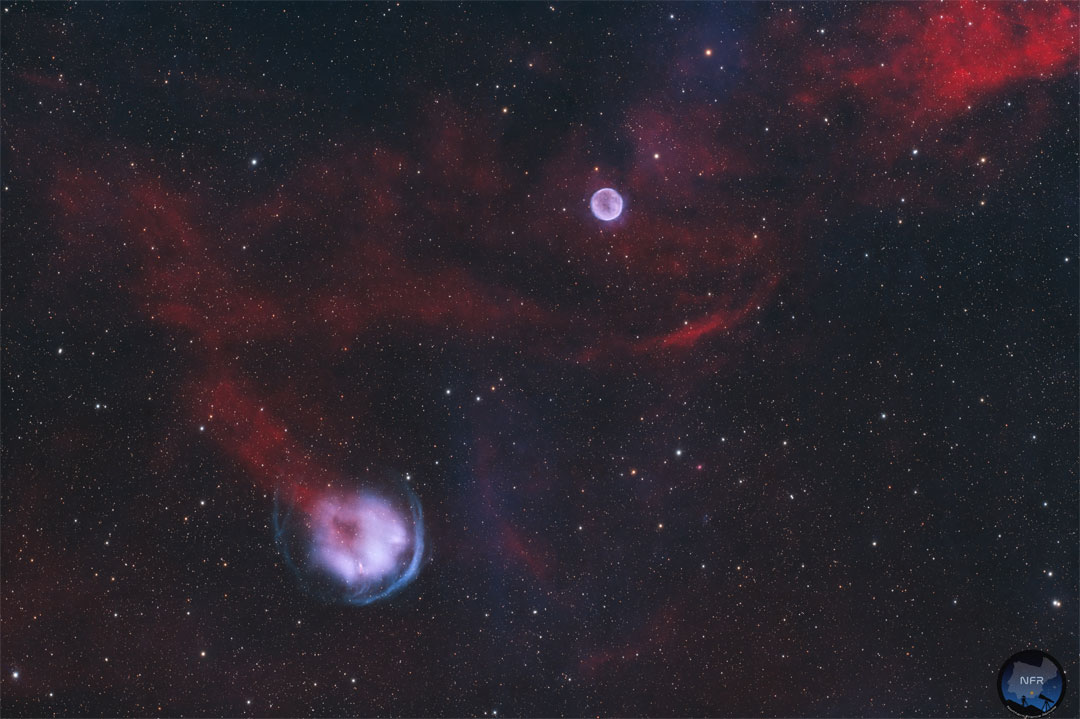HFG 1 和 Abell 6 : 行星星雲
HFG1 & Abell 6: Planetary Nebulae

來源:Julien Cadena &
Mickael Coulon;
Text: Natalia Lewandowska
(SUNY Oswego)|發表日期:2024-02-12
像仙后座中的Heckathorn-Fesen-Gull 1 (HFG 1 )和Abell 6 這樣的行星狀星雲是像太陽這樣的中型恆星最後階段的殘餘物。 儘管形狀各異,但行星狀星雲與真正的行星沒有任何共同之處。 位於照片左下方的 HFG 1 是由雙星系統 V 664 Cas 形成的,它由一顆白矮星和一顆紅巨星組成。這兩顆恆星圍繞著它們的質量中心運行了大約半個地球日。 V 664 Cas 以比地球上最快的火車快約 300 倍的速度與整個星雲一起執行,產生了一個藍色的弧形衝擊波。在弧線最亮的區域,衝擊波與周圍星際介質的相互作用最為強烈。大約 10 , 000 年後,由於產生星雲的恆星發射的紫外線不足,行星狀星雲就變得不可見了。 行星狀星雲具有美麗的形狀和結構,是天體攝影師們非常想要拍攝的天體。
原文:Planetary nebulae like Heckathorn-Fesen-Gull 1 (HFG1) and Abell 6 in the constellation Cassiopeia are remnants from the last phase of a medium sized star like our Sun. In spite of their shapes, planetary nebulae have nothing in common with actual planets. Located in the bottom left part of the featured photo, HFG1 was created by the binary star system V664 Cas, which consists of a white dwarf star and a red giant star. Both stars orbit their center of mass over about half an Earth day. Traveling with the entire nebula at a speed about 300 times faster than the fastest train on Earth, V664 Cas generates a bluish arc shaped shock wave. The wave interacts most strongly with the surrounding interstellar medium in the areas where the arc is brightest. After roughly 10,000 years, planetary nebulae become invisible due to a lack of ultraviolet light being emitted by the stars that create them. Displaying beautiful shapes and structures, planetary nebulae are highly desired objects for astrophotographers.
※ 本文由萌芽機器人自動轉貼自每日一天文圖(Astronomy Picture of the Day,APOD),原文為英文,正體中文是透過 DeepL 翻譯及 OpenCC 進行自動處理,內容僅供參考,若有任何錯誤之處還請見諒!
關於每日一天文圖:每日一天文圖網站是美國國家航空暨太空總署與密西根理工大學提供的服務,網站每天提供一張影像或圖片,並由天文學家撰寫扼要說明其特別之處。